What's New
Displaying results 121 - 130 of 4052
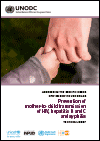
Resource | Publications,
This technical brief provides guidance for the provision of equitable, evidence-informed and human-rights-based services for prevention of mother-to-child transmission (PMTCT) of HIV, hepatitis B and C and syphilis among women who use drugs, and to support countries in their efforts towards elimination of mother-to-child transmission (EMTCT).
As a general principle, all pregnant and breastfeeding women who use drugs should have at least the same access to evidence-based services for PMTCT as women in other populations. Women should not be excluded from health care because of their substance use. All interventions should be voluntary, with informed consent and maintenance of confidentiality, including about a person’s drug use or HIV status.
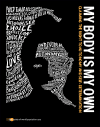
Resource | Publications,
My Body is My Own - Claiming the right to autonomy and self-determination.
We have the inherent right to choose what we do with our body, to ensure its protection and care, to pursue its expression. The quality of our lives depends on it. In fact, our lives themselves depend on it.
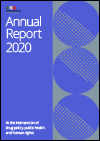
Resource | Publications,
In 2020, Harm Reduction International found new ways to work together to advocate for the health, rights and dignity of people who use drugs, while ensuring that we used our expertise in tracking developments in harm reduction to map the impact of COVID-19 in our sector.
Most remarkably, amidst global upheaval, there have been significant gains in harm reduction and human rights. Communities and civil society have found new and innovative ways to reach people where they are at, creating important momentum for the permanent acceptance of health interventions which centre human dignity, agency and lived experience. Through the challenges of our diverse global experiences of lockdown, people who use drugs have led with courage and compassion, demonstrating the case for community leadership – yet again.
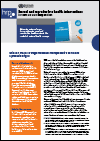
Resource | Publications,
Intended for all stakeholders working towards universal health coverage (UHC) in sexual and reproductive health (SRH) services, this document accompanies the UHC Compendium of interventions, and serves as a guidance note to version 1.0 of the database. To enable easy access to all SRH related interventions in the UHC Compendium, this document collates them. It also gives a brief overview of the UHC Compendium website and initial steps to navigate it. This document will be updated alongside version 2.0 of the database.
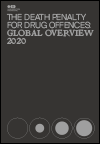
Resource | Publications,
Harm Reduction International has monitored the use of the death penalty for drug offences worldwide since our first ground-breaking publication on this issue in 2007. This report, our tenth on the subject, continues our work of providing regular updates on legislative, policy and practical developments related to the use of capital punishment for drug offences, a practice which is a clear violation of international law.
The Global Overview 2020 provides an analysis of key developments related to the death penalty for drug offences in 2020, their potential medium- term and long-term consequences, and the influence of COVID-19 on these changes. It will also examine the impact of measures introduced in response to COVID-19 on the right to a fair trial. A special section at the end of the report provides a review of best practices identified by lawyers for advocating against the death penalty at the national level.
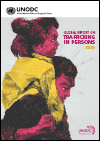
Resource | Publications,
The report comes at a time when global suffering has vastly increased vulnerabilities to trafficking. Extreme poverty is expected to rise for the first time in decades, with the continuing COVID-19 crisis casting a long shadow over our societies and economies. With many millions more women, men and children in every part of the world out of school, out of work, without social support and facing diminished prospects, targeted action is urgently needed to stop crimes like trafficking in persons from adding to the pandemic’s toll.
The report draws on data from 148 countries and explores issues of particular relevance in the current crisis, including the impact of socio-economic factors, drivers of child trafficking and trafficking for forced labour, and traffickers’ use of the internet.
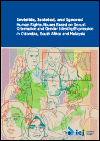
Resource | Publications,
The report aims to offer an overview of different contexts and issues relevant to the respect, protection and promotion of the human rights of LGBT people through a human rights-based analysis and, in so doing, it aims to support lawyers working to enhance protection for the human rights of LGBT persons within their challenging domestic legal frameworks.
The report provides support to the work of LGBT human rights defenders working on human rights issues, as well as assisting policymakers to better understand the impact of law and policy on the human rights of LGBT persons globally.
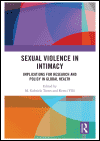
Resource | Publications,
A fascinating new volume Sexual Violence in Intimacy (eds. Torres & Yllö, 2021), including a chapter by kNOwVAWdata's Dr Henriette Jansen.
In her chapter, Dr Jansen looks at gender-based violence and marital rape in 11 Pacific Island countries, revealing unexpected and misunderstood patterns and drivers typically hidden behind regional, subregional and national averages.
Through an unprecedented analysis of violence against women prevalence data across the Pacific, Jansen illustrates how without qualitative insights and cross-cultural contextualisation, quantitative data alone never tell the full story.

Resource | Publications,
Big data analysis shows that Internet searches related to violence against women and help-seeking rose significantly during COVID-19 lockdowns in eight Asian countries, buttressing evidence of the particular dangers faced by women confined to homes or restricted in their movements. In response, government and private service providers should boost their online reach and engagement with survivors of violence.
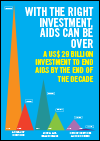
Resource | Publications,
UNAIDS modelling shows that investing US$ 29 billion a year in the HIV response in low- and middle-income countries by 2025 will put the world back on track to end AIDS by 2030. The investment, paid for by both donors and the wealthier countries most impacted by the HIV pandemic, would result in annual new HIV infections falling dramatically, from 1.7 million in 2019 to 370 000 in 2025, and annual AIDS-related deaths falling from 690 000 in 2019 to 250 000 in 2025. The number of new HIV infections among children will drop from 150 000 in 2019 to less than 22 000 in 2025.





